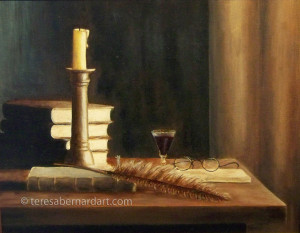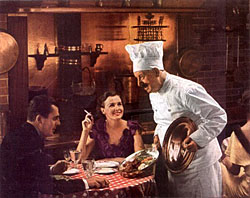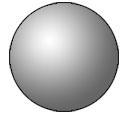Element of Art: Value Review
Basic Art Element — Value

Value is a basic element of art that refers to the gradual change of lightness or darkness of a color. It is created when a light source shines upon an object creating highlights, form shadows, and cast shadows.
Value is most evident on the grayscale, where black is represented as lowest or darkest, and white is represented as the highest or lightest value. Or, more simply said, they are the various shades of grey between white and black. Artists use them to create highlights and shadows (shading) in objects and create depth in their paintings or drawings.

Colors have value too. Changing the value of a color is as simple as adding black or white to it. Some colors, like yellow and orange, are naturally light in value.

The Benefits of Values in an Oil Painting
Successful paintings have a full range of value. This means that there are ample amounts of both light values and dark values. Paintings that possess a full range of values tend to stand out more and are more pleasing to the eye.
 Value creates contrast and adds emphasis.
Value creates contrast and adds emphasis.
The human eye tends to be drawn to areas of high contrast. High contrast occurs when lighter elements are placed directly next to much darker ones, creating a dramatic effect. This technique is used to draw attention to specific areas of a painting that the artist wants to emphasize, thus creating a focal point. For example, a light figure on a dark background will become the center of attention, and a dark figure on a primarily white background will command the eye’s attention as well.
Value creates the illusion of depth.

Value is an important tool to suggest roundness or depth. It helps create depth within by making an object look three-dimensional, or a landscape appear to recede into the distance. Light values make elements feel like they are further away, and dark values make them seem closer.
Value creates an opportunity to set the mood.
- Low Key — These are paintings that exhibit mostly dark values and very few lights. Low-key paintings have very little contrast and seem to communicate a depressing, sad, or mysterious mood. Paintings with predominantly dark values often convey a sense of the nocturnal and secretive, of things hidden just beyond sight.
- High-key — These are paintings that feature mostly light values and very few darks. There isn’t much contrast in a high-key painting. Usually, these paintings possess a light, happy mood. Female portraits are often high key as they can convey delicacy, innocence, and dreaminess.
Using both high and low key colors in a painting can create contrast which often feels dramatic or exciting.